Most books are intended to be easily read and understood, and the oldest ones can often serve as windows into long-extinct cultures and ways of life. But others, either because of intentional obfuscation by the author or by virtue of being written in dead languages, remain mysterious to the scholars that study them. From obscure religious texts and books about magic to unbreakable codes and ciphers, the following are the ten artifacts of literature that have most confounded researchers and translators.
10. The Codex Seraphinianus
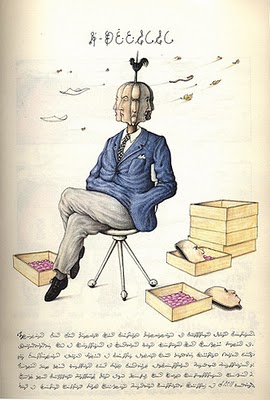
Written between 1976 and 1978 by Italian artist Luigi Serafini, the Codex Seraphinianus is nothing if not an intentional attempt at creating something mysterious. As much as it can be understood, the book is said to be an encyclopedia of an imaginary planet, complete with maps and drawings of plant and animal life. Most interesting of all, Serafini wrote the book in the language of his hypothetical world. The whole Codex is composed in a bizarre alphabet that has still yet to be translated even after intense study by linguists. Since the text itself is unreadable, the Codex has become most famous for Serafini’s artwork, which ranges from the surreal and beautiful to the downright disturbing. One page depicts fruit that seems to bleed, while another shows fish that are shaped like flying saucers. In one of the book’s most famous images (it’s been the cover in most editions), a series of panels depict a naked man and woman slowly transforming into an alligator.
Possible Explanations
Theories abound as to what the secret of the Codex Seraphinianus really is, but Serafini has remained tight-lipped about the book’s meaning ever since its release in the early 80s. Critics and admirers have proposed numerous theories, among them that the book’s text is actually a false language that means nothing, but no real answers have ever been uncovered.
9. The Liber Linteus
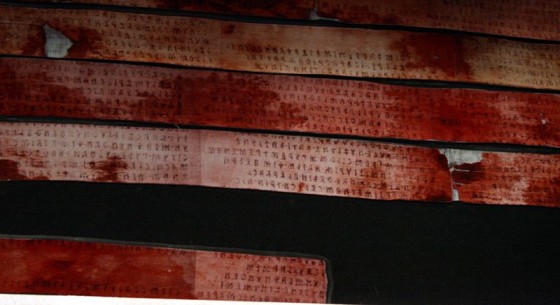
The Liber Linteus is an ancient text that dates back to the days of the Etruscans, a culture that flourished in Italy in the years prior to the rise of the Roman Empire. In addition to being one of the oldest and longest Etruscan documents, the Liber Linteus is also notable for being the only known example of a book made from linen. Even more interesting than the document itself is the context of its discovery. After the fall of the Etruscans, artifacts of their culture like the Liber Linteus ceased to hold any significance to the Romans. What they did care about, though, was the linen cloth that the book was written on. This was because after the Romans conquered Egypt, many of them began to embrace the custom of mummification, which required that the body be wrapped in cloth. It was through this practice that the Liber Linteus, which was probably seen as a useless artifact, was eventually used as a funeral wrapping for the mummified body of the wife an Egyptian tailor. This same mummified corpse was purchased hundreds of years later by a wealthy Croatian, who intended to use it as a wall decoration. After his death in the 1800s, the mummy was donated to a museum, and only then was the great cultural significance of the Liber Linteus realized.
Possible Explanations
In its entirety, the Liber Linteus consists of 230 lines of text totaling 1,200 words. Very little is known today about the Etruscan language, and as such the document has never been fully translated. But based on their limited knowledge, scholars have determined that the Liber Linteus is most likely a calendar describing Etruscan religious ritual.
8. The Book of Soyga
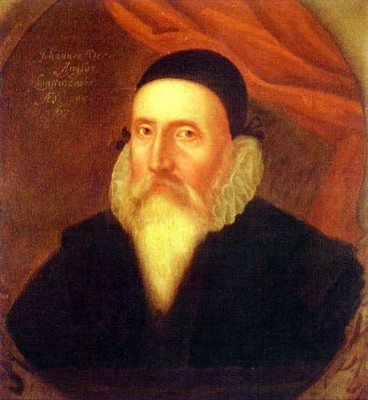
The Middle Ages produced their share of strange texts, but perhaps none was as mysterious as the Book of Soyga, a treatise on magic and the paranormal that contains passages that have yet to be translated by scholars. The book is most famously associated with John Dee, a noted thinker of the Elizabethan era who was known to dabble in the occult. In the 1500s, Dee was said to be in possession of one of the only copies of the book, and he supposedly became obsessed with unlocking its secrets, particularly a series of encrypted tables that Dee believed held the key to some kind of esoteric spiritual knowledge. This was no easy task, as the book’s unknown author had utilized a number of typographical tricks, including writing certain words backwards and encoding others in mathematical script. Dee became so fixated on cracking the codes that he even traveled to continental Europe in order to meet with a famous spiritual medium called Edward Kelley. Through Kelley, Dee claimed to have contacted the archangel Uriel, who he claimed told him that the book’s origins dated back to the Garden of Eden.
Possible Explanations
Unfortunately, Dee was unable to finish decoding the mysteries of the Book of Soyga before his death. The book itself, though known to have existed, was believed lost until 1994, when two copies of it were rediscovered in England. Scholars have since studied the book, and one of them was able to partially translate the tables that had so fascinated Dee. Still, beyond finding that the book is most likely related to Kabbalah, a mystical sect of Judaism, these researchers have not been able to decipher the book’s real significance.
7. The Rohonc Codex
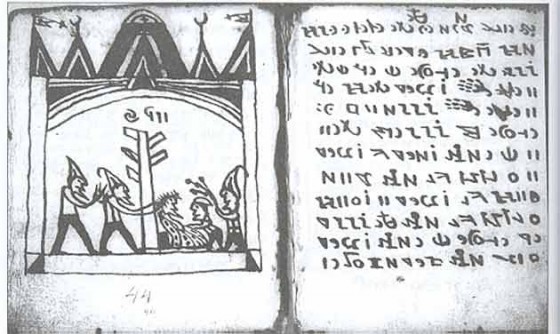
One document that has proven resistant to any kind of consistent translation or explanation is the Rohonc Codex, a centuries-old book that is said to have surfaced in Hungary sometime in the 1700s. The Codex consists of 448 pages of text, all of it written in a still-unknown language. Scholars have argued that it could be anything from early Hungarian to Hindi, but it lacks many of the prominent features of any of these languages. Moreover, the alphabet features many more characters than any major language outside of Chinese. Perhaps even more fascinating than the text of the Rohonc Codex are the 87 illustrations that accompany it. These depict everything from landscapes to military battles, but they also employ religious iconography that is unique to a number of different religions, including Christianity, Hindu, and Islam. This would suggest that whatever culture the document depicts had many different faiths in existence simultaneously.
Possible Explanations
There have been several partial translations of the Rohonc Codex, each with its own unique results. One scholar proclaimed the document to be a religious text, while another said it was a history of the Vlachs, a Latin culture that once thrived in modern-day Romania. But perhaps the most popular take on the document’s origin is that it was a hoax perpetrated by Samuel Literati Nemes, a notorious forger from the mid-1800s. This idea has often been disputed, but though they have managed to prove that the text of the Codex is not just gibberish, modern scholars have been unable to prove the forgery theory wrong.
6. Rongorongo
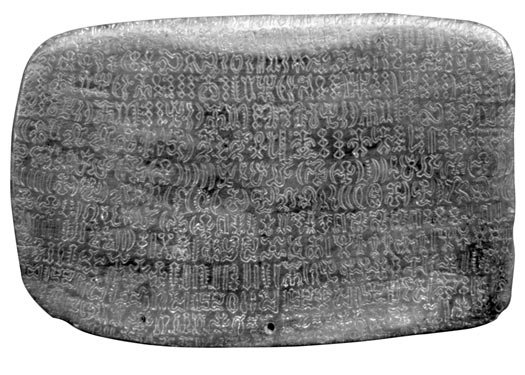
Rongorongo isn’t so much a text as it is series of artifacts. The name refers to an indecipherable system of pictographic writing that originated on the small island nation of Rapa Nui, also known as Easter Island. Few examples of Rongorongo exist, outside of some stone carvings and wood tablets, but it remains one of the biggest unsolved linguistic mysteries in the world. This is because Easter Island’s sheer isolation means that Rongorongo would have been created without the influence of other languages, a feature that provides scientists a unique opportunity to examine how writing first came into existence. Like Egyptian hieroglyphics, Rongorongo is pictographic in nature, consisting of a series of glyphs and symbols. The glyphs themselves are thought to be a key to when the script was first invented, as they include certain plants and animals that would have only been prevalent on Easter Island in the era before its discovery by Europeans in the 1700s.
Possible Explanations
Despite a great deal of study, scientists have been unable to translate any of the Rongorongo writing system. In fact, so little is known about it that some have argued that it isn’t writing at all, but rather an ornamental kind of artwork. The discovery of a tablet that depicts a lunar calendar seems to prove this theory wrong, but until the Rongorongo glyphs are fully translated, very little will be known about them for sure.
5. The Beale Ciphers

The story behind the Beale Ciphers, which have foiled would-be code breakers for over 100 years, is the kind of old-fashioned buried treasure yarn that Hollywood screenwriters would be proud to come up with. The story begins in Virginia in 1820, when a man named Thomas Beale supposedly entrusted a box containing three pages of coded text to an innkeeper, with instructions that the box should only be opened if Beale did not return to claim it within ten years. Beale subsequently disappeared without a trace, and the innkeeper, named Robert Morriss, later spent several years trying to decode the pages. One of them was finally cracked by one of Morriss’ friends, who used the Declaration of Independence as a key. It was then that it was discovered that the pages were a map to the location of a cache of buried treasure. According to the document, Beale and some accomplices had discovered thousands of pounds of gold and silver in New Mexico and later buried it in Bedford County, VA. Unfortunately, Morriss and his friend were unable to decode the other two pages, which give the treasure’s exact location and the names of its owners, and Beale’s bizarre method of encryption has managed to confound anyone who’s tried to decipher it since.
Possible Explanations
The Beale Ciphers have since become their own mini-phenomenon (hundreds of would-be treasure hunters have been arrested for trespassing in Bedford County), but Beale’s gold and jewels have never been found. Many have since claimed that ciphers are nothing but an elaborate hoax, and many of the story’s details—like certain words in the documents that were not in popular usage until years later—seem to back this up. Still, this hasn’t stopped people from trying to unlock Beale’s secrets, especially since the treasure would now be valued at roughly $40 million.
4. Kryptos
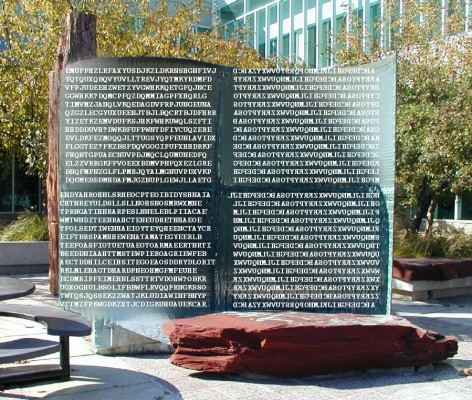
Artist Jim Sanborn’s sculpture Kryptos might not be a document, but it’s included here because the text inscribed on it has created a mystery that even the best code-breakers in the CIA have not been able to unravel. The sculpture was commissioned by the CIA as a monument to the intelligence gathering work that made the agency famous, and it was installed at their headquarters in Langley, VA in 1990. Rather than just make a beautiful work of art, Sanborn took things a step further. He collaborated with Ed Scheidt, a top CIA cryptographer, and inscribed a coded series of letters and question marks on the sculpture, which resembles a scroll. The codes are made up of 869 characters, and can be broken into four separate parts, each one of which is supposedly a partial key to the answer of the others. Together they serve as the building blocks of what Sanborn calls “a riddle within a riddle” that can only be solved by using sophisticated decoding techniques. Photo: thekryptosproject.com.
Possible Explanations
Sanborn and Scheidt’s cipher has since become an obsession for amateur and professional cryptographers alike. Members of the CIA and the NSA have all tried their hand at cracking it, and there is even an online group devoted to it that has thousands of members. Twenty years later, these enthusiasts have succeeded in cracking three of the four parts of the cipher, but the fourth and most important continues to have them stumped. Sanborn has hinted that the contents of the other three parts—which give the longitude and latitude of a point 200 feet southeast of the sculpture and include quotations relating to Howard Carter’s discovery of the tomb of Tutankhamen—offer the best clues. As of yet, though, no one has succeeded in getting to the bottom of the mystery.
3. The Urantia Book
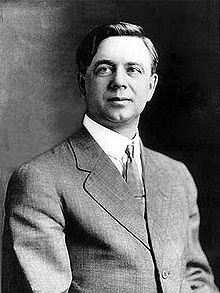
The Urantia Book is a pseudo-religious text that claims to “expand cosmic consciousness and enhance spiritual perception” through its discussions of philosophy, cosmology, and the life of Jesus. The book supposedly originated in Chicago, Illinois sometime in the early-to-mid twentieth century, and today it has become its own kind of phenomenon, having inspired a great deal of study and even a foundation that seeks to promote the book and its teachings. The over 2,000-page text has no known author, and the story of its origin is particularly bizarre: in 1925, a doctor named William Sadler (pictured above) supposedly came in contact with a sickly man who would often drift in trances and speak aloud at length. Sadler and a stenographer recorded these monologues, which the doctor claimed were later added to by some kind of celestial, supernatural process. The Urantia Book supposedly shares many common characteristics with major religions, particularly Christianity, but it also spends a great deal of time discussing scientific theories. Most notable are the book’s descriptions of the geography of the universe, which it splits up into “superuniverses” and the “local universe,” which it says is composed of around 1,000 inhabited planets.
Possible Explanations
This all may sound like science fiction, and indeed the idea that the Urantia Book is a clever piece of literature is a popular explanation of the mystery behind it. Skeptics, among them science writer Martin Gardner, argue that Sadler and a group of confidants most likely composed the book themselves sometime during the 1920s. Recent research, including an essay that claims the Urantia Book plagiarized a number of academic texts on religion, seems to back up this assertion, but there has yet to be any definitive proof of who was really behind it all.
2. The Gnostic Gospels
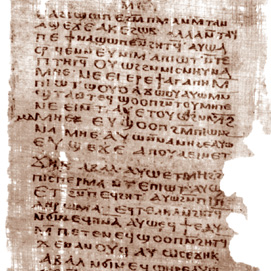
Also known as the Nag Hammadi library, the Gnostic Gospels are a collection of leather-bound books that date back to the 4th century. They make up the major texts of Gnosticism, an offshoot of Christianity that existed around the time of the 2nd century, whose adherents are said to have believed that true salvation came through deep self-knowledge and an understanding of a “higher reality.” The Gnostic Gospels, which feature such volumes as “The Gospel of Thomas,” “The Gospel of Mary,” and even “The Gospel of Judas,” were discovered in 1945 by a pair of farmers in Nag Hammadi, Egypt. They had been buried in a protective jar centuries earlier, most likely by a priest hoping to hide them from the orthodox Christian church, which regarded the Gnostics as heretics. The books went through many different owners, at one point even being sold on the black market, and it was not until the 1970s that they were finally translated into English. They’ve since become a popular philosophical text, and have even figured prominently in a number of different movies and novels. They’re also quite controversial, not just for their overlap with the Bible, but for the ways in which they attribute sayings to Jesus that don’t appear in the New Testament.
Possible Explanations
Unlike some of the other entries on this list, scholars generally understand the Gnostic Gospels, and the texts have been successfully translated into a number of languages. Still, the books are notable because of the place they hold in helping to develop the study and history of Gnosticism as a belief system. More importantly, the discovery of ancient texts that claim to offer previously undiscovered background stories about Jesus has sparked a fierce debate in religious and academic circles. Some have claimed that the books are nothing more than heretical fabrications, while others have argued that the Gnostic Gospels should be considered on the same terms as the Bible.
1. The Voynich Manuscript

Of all the bizarre and mysterious texts that have been uncovered over the years, perhaps none is as famous as the Voynich Manuscript, a book written by an anonymous author in an unknown language that has baffled nearly every cryptographer that’s ever tried to translate it. From what researchers have been able to uncover, the 15th century manuscript was part of a Jesuit library in the 1800s, and from there it passed through several hands before falling into the possession of a Polish book dealer named Wilfrid Voynich in 1909. After Voynich’s death, the manuscript became a subject of fascination for linguists and cryptographers, many of whom spent years studying the book’s mysterious language and alphabet. There are numerous theories about the text of the Voynich Manuscript, including that it is some kind of encoded puzzle; that it’s written in a heretofore undiscovered language; that it is meant to be read under a microscope; and even that it’s some kind of divinely inspired religious document that was written in a trance. But these are all just theories, and even after some fifty years of examination by the world’s top code-breakers, nothing is known for sure. Crude drawings of plants and jars in the book’s margins have led many to claim that it must be a manual on medicine or alchemy, but this too is just conjecture.
Possible Explanations
source: http://www.toptenz.net/top-10-mysterious-texts.php
